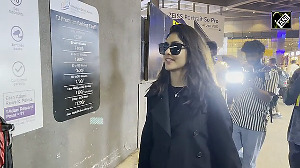What's common to them besides the fact that the categories are dominated by giant western multinationals? Well, they tell linear, rational stories with lots of product facts, lots of science each trying to out-compete the other with stronger laboratory stories and scientific jargon.
They operate on slice-of-life sequences or celebrity endorsements. And on average, they are below the mean on the entertainment quotient. And most of these advertisements have passed through rigorous tests of consumer research and been given the green signal.
They must be working because many of the brands are market leaders and dominant players. So, are we Indians such rational animals who need science classes to be convinced to buy a low-price product like soap, toothpaste or cold cream? Or is it a reflection of a western, developed market view of a developing market like India?
The counterpoint to these multinational brands is the equally large and successful local brands that have successful advertisements that pose a bit of a challenge to the viewer and thus engage and excite him.
They are non-linear and work towards evoking emotions rather than simply conviction. Fevicol has over decades used Indian slice of life earthy yet endearing to create a brand that is today a benchmark in its category.
Hutch, through the new millennium, has used metaphors and analogies to tell its story. These connects have sold a myriad product attributes and yet created emotional affinity for the brand. Fevicol is a highly functional product, a glue used for business purposes by the carpenter.
Hutch/Vodafone is a technology product that has both the opportunity many technical facts to talk about and a reason it's a long-term consumer commitment and so a rational decision to do linear, fact-based advertisements. However, both have desisted and yet succeeded. Which is a truer reflection of the Indian people, society and culture?
It is a fact that we are a very knowledge-driven and value-conscious society. We want more from whatever we buy and extract even more from whatever we do. We place knowledge on a pedestal.
In the traditional caste system, the Brahmin was the most respected. However, even in modern society the clamour for degrees is maddening. Dropping out of college is frowned upon and successful people would prefer to hide this fact, if they did drop out, rather than wear it on their sleeve (unlike many successful American entrepreneurs who are not embarrassed to say so). This all points to the fact that multinational brands are up the right path.
However, when you look around Indian society, rationality seems a mirage otherwise. An average Bollywood film smacks of no logic: a village scene can suddenly cut away to faraway Switzerland for a song and dance sequence and the viewer is very comfortable suspending his disbelief to enjoy it.
The average TV serial is filled with melodrama that takes the viewer from high to low and again high and the characters become personalities in their own right. Viewers begin to mix the actor and character and often cannot separate
Dive deep into culture and investigate Indian storytelling. Our two big epics the Ramayana and Mahabharata are a collection of plots, subplots and past plots all interweaving into a grand spectacle.
There are multitudinous characters, many related to each other and each action having a connection with some past event. And the average Indian is comfortable with the complexity of such storytelling. He is able to bring it all together in his mind and make sense of it. Linearity is perhaps something he sees only in Indian multinational advertising.
Most traditional good values in Indian society have been transmitted from generation to generation by parables and fables in the form of Panchtantra, Akbar Birbal stories or Tenali Raman anecdotes.
It's interesting to note that actual values are communicated as moral of the story rather than as commandments. Even the Bhagwad Gita is not about telling you what to do as much as it is about inspiring you to know right from wrong. It's left to the receiver to understand and interpret. Yet, much of the advertising in the belly of the market tends to end up become professorial and instructional. Are marketers missing a trick?
Further, Indian natya shastra talks about the importance of emotions to connect with the audience. It identifies nine emotions that can actually move audiences and has always been integral to storytelling in our culture.
Its these emotions that come together interestingly in satires like the local hasya kavi sammelans (comical poetic shows) and political cartoons, which bring non-linearity, emotions and intelligence all together very dexterously.
This reflects the Indians ability to make lateral connections and enjoy an intellectual challenge. Yet, much of the multinational brand advertising in India tends to treat
the consumer as someone who wants to be spoon-fed with messages rather literally.
The ultimate proof of the irrationality of the Indian is the way he does business with partners. The westerner operates on written contracts which cover the scope of work and provide for defaults. The Indian, on the other hand, operates on zubaan.
If in his heart he feels he can do business with you, he is ready to operate on your word and take the relationship forward without all the details being ironed out first. Its emotions that drive business transactions.
If Indians as people exhibit emotions in so many other things, why should it be different for advertising and brands? After all, brands are ultimately about emotions. Marketers need to believe that they are selling to people as well as consumers, and need to recognise that while Indians as consumers are value-conscious, as people they are emotional.
So talking to the heart makes as much, or more, sense as trying to attack the mind. Soft selling works better than hard selling. Maybe much of consumer testing puts the knowledge-driven Indian respondent into an intellectual examination, prompting bright student behaviour rather than real life viewer.
Something worth thinking about.
The author is Country Head, Planning and Discovery, Ogilvy and Mather, India. Views expressed are personal.







 © 2025
© 2025